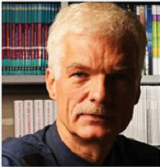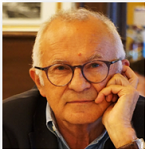back to abstracts – back to annual meeting

Andreas Schleicher
|
In a world where the kind of things that are easy to teach and test have also become easy to digitise and automate, it will be our imagination, our awareness and our sense of responsibility that will enable us to harness the opportunities of the 21st century to shape the world for the better.
Tomorrow’s schools will need to help students think for themselves and join others, with empathy, in work and citizenship. They will need to help students develop a strong sense of right and wrong, and sensitivity to the claims that others make.
What will it take for schools to be able to do this?
 While improvement in education is far easier to proclaim than achieve, the presentation will look at many successes from which we can learn – not by copying and pasting solutions from other schools or countries, but by looking seriously and dispassionately at effective practice and policy around the world.
While improvement in education is far easier to proclaim than achieve, the presentation will look at many successes from which we can learn – not by copying and pasting solutions from other schools or countries, but by looking seriously and dispassionately at effective practice and policy around the world.
The presentation will also take a critical look at the political economy of reform in education. The laws, regulations, structures and institutions on which public policy tends to focus are like the small, visible tip of an iceberg. The reason why it is so hard to move education systems forward is that there is a much larger, invisible part under the waterline. This invisible part is composed of the interests, beliefs and fears of the stakeholders who are involved. This is where unexpected collisions occur, because this part tends to evade the radar of public policy.
The presentation will explore how we can help people recognise what needs to change, and build a shared understanding and collective ownership for change; how we can focus resources, build capacity, and create the right policy climate with accountability measures designed to encourage innovation and development, rather than compliance; and how we can tackle institutional structures that too often are built around the interests and habits of educators and administrators rather than learners.

François Dubet
|
Les école publiques construites au cours du 20ème siècle ont été des écoles nationales chargées de forger des consciences nationales et développant les valeurs de la modernité. Ce modèle scolaire é été bousculé par la massification de l’enseignement secondaire et supérieur, par la question des inégalités, par la perte de légitimité de la culture scolaire et par la recherche de l’efficacité. Partout, les systèmes scolaires ont le sentiment d’être en crise et s’impose la nostalgie de l’ancienne école.
 Aujourd’hui, la définition de la culture scolaire est soumise aux mêmes enjeux. Il importe de combiner l’école nationale à l’école démocratique défendant les droits et l’autonomie des individus. L’école doit aussi associer la conscience du commun et la capacité d’anticiper les besoins de qualifications et de compétences.
Aujourd’hui, la définition de la culture scolaire est soumise aux mêmes enjeux. Il importe de combiner l’école nationale à l’école démocratique défendant les droits et l’autonomie des individus. L’école doit aussi associer la conscience du commun et la capacité d’anticiper les besoins de qualifications et de compétences.
Dès lors, nous devons réfléchir sur la forme scolaire elle-même, sur la création de communautés éducatives, sur l’association de la formation scolaire et des compétences professionnelles. La nostalgie de l’école ancienne peut se comprendre, mais elle ne nous aide pas à définir l’école dont nous avons besoin.

Dario Ianes
|
The presentation will illustrate the Erickson project ET Expert Teacher, Expert team, its objectives, methodology and what has been done so far.
The ET project is a wide design which defines the key competences of an expert teacher, their related professional standards, the various paths of development and the certification of these competencies.
 The research group has so far defined four profiles of competence, and four related paths of professional career, middle management figures who are crucial for a positive change in school organization.
The research group has so far defined four profiles of competence, and four related paths of professional career, middle management figures who are crucial for a positive change in school organization.
At the moment the four paths are:
- innovation and inclusion,
- teachers’ training,
- entrepreneurship, internships, education and career guidance;
- innovative organisational processes.
The research is now defining self-evaluation paths, and certification.
The true objectives of Erickson are to foster, train, certify expert teachers and give them visibility.

Magnus Blixt
|
How does workplaces today look like? The same as last century? I don’t think so! Should the school environment be designed for the kids of ”The Great Normality” or for each and every one? Or can we – in the same square meters – give greater opportunities for everyone to learn and to prosper? Yes we can, I say!
“How we furnish the schoolroom determines what we can do” – and how we think determines how we furnish the schoolroom. It’s really not harder nor easier than that. Sometimes we have to think in new ways to work, and ometimes we have to work in new ways to think – and often it can and must be made between those two.
We have really tried out new things at Glömstaskolan, a municipal school south of Stockholm.
The key question is ”Why?”. If that question is not adressed, why are we doing what we are doing? ”Schools use to…” is not a sufficient answer – every place needs a purpose, and should be designed as a place for learning activities. Learning occurs as we all know from variation and motivation. A new society where digitalization is just like running water, which was something spectacular for hundred years ago and now is something we take for granted, holds both opportunities as well as challenges. Do we leave them to develop by themselves, or are we proactive here?
The next question is ”Why not?”. We know that the school of today don’t reach the goals it’s supposed to, so why not try something new? If you have an idea what would work, how can you try out if it does? Rather than designing The Big Project, why don’t design a small study and really, really find out first? Try, collect findings, adjust, collect new findings in a never ending story.
But beware – there is always a context to consider! Sometimes you must make other changes to make the change work. Changing the physical school environment without changing the culture and the organisation is truly hard, if it is even possible! So what changes do we see? Why? Why not?



